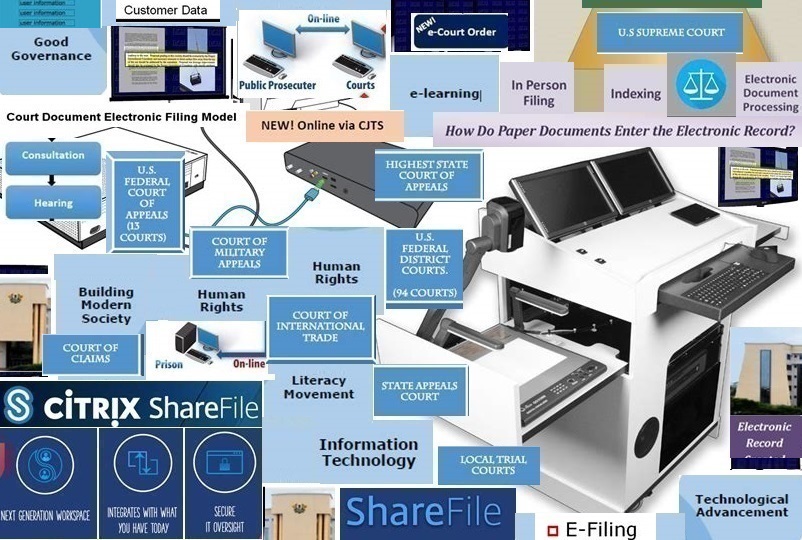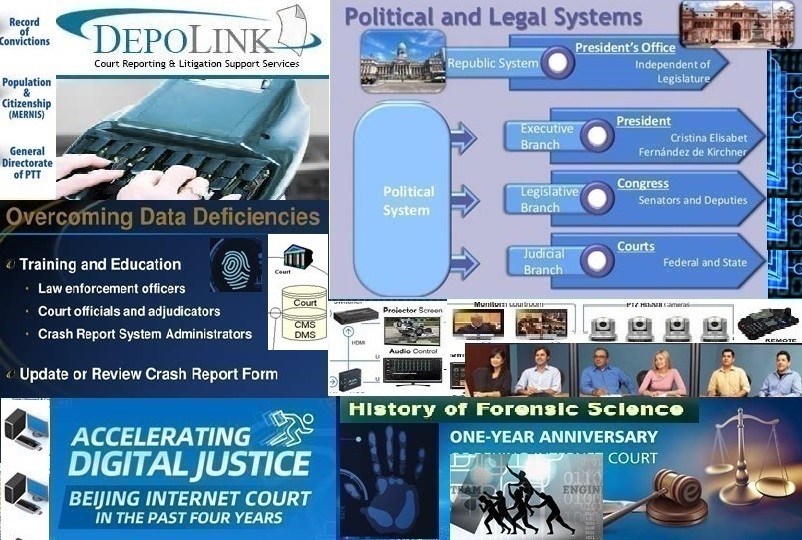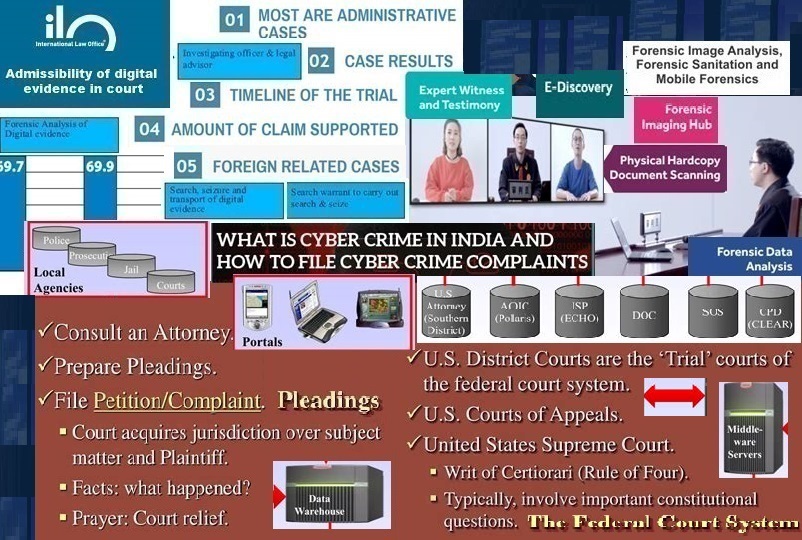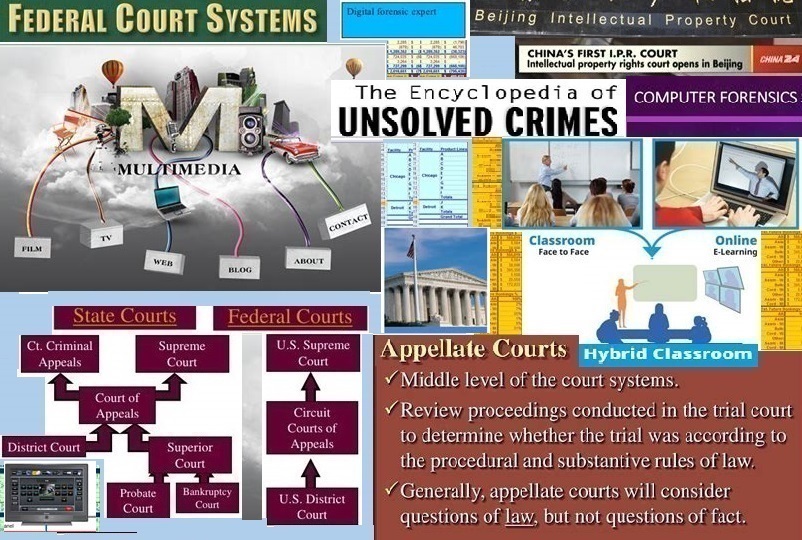
Judge Herbert B. Dixon, Jr. was appointed to successive fifteen-year terms – first by President Ronald Reagan and subsequently by President William Clinton. He was a senior judge with the Superior Court of the District of Columbia, a member of the ABA Journal magazine’s Board of Editors, and the technology columnist for The Judges’ Journal magazine. He retired after thirty years of service and was nominated the 2019 Judicial Honoree of the Year by the Bar Association of the District of Columbia (BADC). He is the recipient of several awards. His research disclosed that most surveyed jurors approved the use of technology tools in the courtroom and revealed that it improved their aptitude as jurors. Modern courts rely on technology and are adamant to determine whether the presentation systems preferred by jurors are the most authentic and reliable; therefore, courts in the District of Columbia are actively assessing evidence presentations and jury instructions in high-tech courtrooms.
Judge Jennifer R. Dorow is an American lawyer and the Chief Judge of the third district of Wisconsin Circuit Courts. During 2011, she was appointed as a Wisconsin Circuit Court judge by Governor Scott Walker and was endorsed as Chief Judge by the Wisconsin Supreme Court in 2017. As Waukesha County Chief Judge, she presided over the trial of the 2021 Waukesha Christmas parade attack. After the trial, she announced her candidacy for the Wisconsin Supreme Court. Due to the high-profile status and enormity of the trial, it received nationwide news exposure. With seventy-six charges against him, the prisoner-defendant decided to represent himself as a pro se defendant, claimed to be ‘a sovereign citizen,’ and tried everything possible to delay the trial. The case was heard in a Wisconsin hi-tech courtroom. judge Dorow had technology at her fingertips to take control of the proceedings in the courtroom. She could mute or stop any audio or visual presentation, halt the questioning of witnesses, or prevent the defendant from expressing certain words in his closing argument such as ‘jury nullification’ and strike it from the record. He did not respect decorum or order in the courtroom, repeatedly talked over her and burst into fits of rage when things did not go his way. Every time this happened, Judge Dorow ordered that he be removed to an adjoining courtroom (that was simply an extension of the main courtroom). He had full sight of the main courtroom, video and audio access, could partake in proceedings, and had an objection sign which the judge could see (even if he was muted). The moment he lashed out in rage and spoke over her, counsel, or witnesses, the judge muted him so that court proceedings could continue. She effectively captured all court interruptions for the record. As soon as he calmed down, she had the bailiff bring him back into the main courtroom, but he continued to interrupt court proceedings, object to rulings, and undermine the authority of the court. This was his daily behaviour that continued for weeks. Judge Dorow endured his insults, remained impartial, and respected his rights, but he tried to argue with her about the notorious jargon of ‘a sovereign citizen.’ Her high-tech courtroom was used to its fullest potential to control the utterly defiant defendant who acted like a two-year-old child with temper tantrums.
Each courtroom uses an integrated courtroom technology system to successfully manage the presentation of audio and visual content in court proceedings. This is an advanced video system known as the Video Evidence Presentation System (VEPS) that enables documents and video to be displayed simultaneously in various locations of the courtroom. The system is centrally controlled within each courtroom. The VEPS cart is a portable, self-controlled computer terminal for the presentation of evidence. This system includes (such as in the Indiana Lake County Circuit Court) video monitors, computer ports, and a document camera. Attorneys can display digitised evidence on CD-ROM to the Judge and jury through video monitors around the courtroom. The presenting attorney can ‘zoom in’ on a portion of electronic evidence on screen. The CD-ROM can hold a transcript, an audio and a video recording of the trial and all evidence obtained at the trial, creating a multi-media trial record. Parties can connect to the courtroom from other locations through video conferencing software to report on circumstances or appear as witnesses. Video conferencing technology can give access to courtrooms for jurors with disabilities and simplify the task of hiring a foreign language interpreter should a trial require one. Other elements of integrated courtroom technology include a document camera (which can be used to display exhibits such as documents or medium-sized three-dimensional objects), HDMI and VGA connections to display images or multi-media presentations from a mobile computer, and a colour video printer that can produce colour prints of images. VEPS is controlled by two touch screen control panels; one control panel is at the clerk’s desk and the other at the Judge’s bench. Laptop audio and video connections are available to display evidence from either the counsel table or the presentation cart; making it possible to choose either audio or video or both audio and video evidence presentation. To choose a source, it must be requested from the clerk. The Judge can control it from the bench. Audio-visual technology has become a method of evidence presentation that is easy to understand. The District Court has obtained various audio-visual evidence presentation devices. Each courthouse in the district is equipped with this technology which is simple to operate. If support is required, the courtroom deputy will assist. Technology-prepared counsel tables offer fast-connect ability for mobile computer equipment to plug into hidden ports to access the electronics in the courtroom which is enlarged by fully integrated video and audio-conferencing systems with numerous pan-tilt-zoom cameras. The courtroom audio system includes various components such as microphones and overhead speakers, an infra-red interpretation and hearing-impaired reinforcement system, auxiliary audio inputs, and an audio-conferencing system.
The Courtroom Technology Management System (CTMS) is a hi-tech courtroom control, presentation, and management system. Fairfax County’s CTMS offers advanced multimedia evidence presentation and conferencing abilities through its integrated CTMS. The courtroom is furnished with communication infrastructure and various technology requirements. All CTMS courtrooms allow the judge, jury, and gallery to view evidence presentations on flat screens which present features of improvement, interpretation, pausing, and printing. The custom-built CTMS allows all high-tech courtrooms to share a mutual infrastructure through a centralised Master Control Room (MCR). The Virginia Fairfax County Circuit Court offers advanced multimedia evidence presentation and conferencing abilities through such an integrated CTMS. The court has unified equipment in each courtroom with input boxes at each attorney’s table as well as at the podium. These systems are required to incorporate both in- courtroom technologies (e.g., for evidence display, recording of court proceedings, and the judge’s bench zone) as well as broader systems that are located elsewhere in the courthouse (e.g., for digital communications, back-end infrastructure, self-service kiosks, and the server room).
Courthouses started filing electronic pleadings and orders of court records when bulk documentation became overbearing and difficult trials required infographics and visual images. Electronic Presentation Evidence (EPE) or electronic evidence is any information stored or transmitted in digital format. Such a document is considered as equal to an original document under the Best Evidence Rule if it is a printout or readable output (by sight or other means) that reflect the accurate data. High-tech courtrooms are equipped with evidence monitors for digital evidence presentation. These monitors are located at the deputy’s desk, the reporter’s desk, the judge’s bench, the jury box, the law clerk’s desk, the lectern, and the witness stand. To use the VEPS, the attorney’s laptop must be able to send the display to an external VGA monitor. The Electronic Evidence Presentation System (EEPS) allows for the inspection of evidence throughout the courtroom’s evidence monitors, including the evidence presentation cart.
An Electronic Court Case Management System (eCCMS) is a web-based system which was established for the dynamic functioning of specific sections in the Judicial Service. Hybrid courtrooms are merely wireless displays of evidence from laptops, smartphones, tablets, and other devices such as video recorders and DVD players. The E-courtroom system contains equipment that allows evidence to be presented in several formats such as Word documents, Microsoft Power Point presentations, videos (DVD/VHS), papers, x-rays, and transparencies. Each civil District Courtroom has the same E-courtroom lectern workstation model; it is a desktop computer equipped with USB ports, DVD-RW, and CD-RW drives. Details for distant connection to hearings will be provided by the Court, but parties must each have a reliable internet access, a microphone, and a webcam. The Beijing Internet Court (BIC) has promoted the thorough integration of a high-quality digital justice system. The team of legal professionals specialise in internet-related cases.
United States Courtrooms are equipped with the most recent electronic presentation and audio-visual equipment for E-courtroom technology. Latest system improvements make the equipment more user-friendly; this allows for evidence to be displayed in a coherent way. These courtrooms are equipped with audio enhancement which incorporates individual desktop microphones, wireless handheld and lapel microphones, and infrared supported headsets for the hearing impaired. Document cameras exhibit documents or three-dimensional objects. Courtroom technology has been installed in many courtrooms with positive outcomes. According to a program implementation plan approved by the Judicial Conference Committee on Automation and Technology this project will continue and be applied to all existing and new courtrooms in the future. Courtrooms have technology liaisons to help with the use of the technology; assistance includes data analysis, IT support, software management, system administration, and web design and development. These developments have closed the bridge between high-powered attorneys and smaller firms by offering all parties the same access to services. The Ceremonial Courtroom is one of several huge tutorial rooms with hi-tech technology that offer instructional Law School programs.
The District Court of the United States has been installed with various components which include auxiliary audio inputs, infra-red interpretation and hearing-impaired reinforcement systems, microphones and overhead speakers, and audio-conferencing systems which can be used to reinforce in-room audio (PA systems) and to present evidence during conference sessions (Zoom, Microsoft Teams, and VoIP calls). The United States District Court for the Central District of California is dedicated to deliver audio-visual experiences that exceed the needs of the Bar and the public by integrating HD audio-visual and presentation technologies to improve courtroom proficiency. The minimum requirements for a courtroom to have audio-visual presentation technology is an evidence camera, input connections for video and sound, as well as an audio sound system and video display. Using a laptop, video evidence should be displayed through a VCR or DVD player. While there is no set standard, all courtrooms will differ; many are implementing a range of new technologies which include the use of collaborative flat screens, webcast testimonies, dual screens that display numerous documents to the jury simultaneously, and even a personal screen for each juror. Courtrooms are designed for audio-visual content, computer equipment, concurrent speech, and distance conferencing.
Clear communication is a fundamental of court proceedings; therefore, professional AV solutions deliver audio-visual clarity. The audio-visual sources of presentation in the courtroom increase juror knowledge and proficiency. The equipment allows lawyers to present evidence in a comprehensive way. For immaculate court proceedings it is vital that the courtroom’s AV system does not falter during a presentation. With minimal effort attorneys can display documents, objects, photos, videos, and electronic presentations to bring detail to life. Audio-video conferencing adds more options to a presentation such as the opportunity to communicate, the capacity to use a whiteboard, and the ability to share documents during audio-visual presentation implies a provision that offers live broadcast services, video conferencing, and web streaming through telecommunication equipment. HDMI and VGA connections exist at counsel tables. A touch screen monitor allows attorneys to complement the images on the screen with documents or photographs and permit witnesses to add clarification with drawings such as direction lines, arrows, and location points. ‘Protective mode’ safeguards against security breaches such as attorneys sending on-screen content directly to the juries for viewing. The United States District Court for Western Pennsylvania has furnished each courtroom in the district with an EEPS that allows counsel to electronically present permissible evidence in trials, hearings and other proceedings to the judge, the jury, opposing counsel, and the witness.
The Court Technology Office (CrTO) facilitates research and manages technological advancements throughout the court system. This involves sharing infrastructure and resources as well as centralising courtroom technology. The federal court system modernises its courtrooms to replicate the unceasing technological progress in trial presentation and litigation. The Department has authority over courtroom technology and is responsible for technical- and web support, technical equipment, and case reports for the judges and staff of the Circuit. The trial technologist manages all courtroom technology and presentation systems; his job description is to maintain and operate all trial presentation hardware and software. He is an important ‘member’ of a skilled and well-organised trial team. The U.S. District Court, District of Minnesota, is dedicated to advanced evidence presentation technology in the courtrooms; an electronic projector as well as a touch screen monitor are available in the courtroom. They believe that premeditated use of evidence presentation technology in the courtrooms deliver positive trial results. Their objective is to deliver systems that are flexible, manageable, and stylish. A manual provides elementary orientation, instructions, and a general summary of the Court’s equipment. The U.S. government has published instructions for lawyers on using court technology to present evidence on monitors in courtrooms. Some of the guidelines relate to technical procedures such as how to connect a laptop to the courtroom monitors.
How legal staff familiarise themselves with and use improvements in courtroom technology will determine the rate of future growth in litigation! Already, the public zone of the Georgia State-wide Business Court consists of four central areas – the attorney conference rooms, the courtroom itself, the courtroom foyer, and the third-floor entrance.















